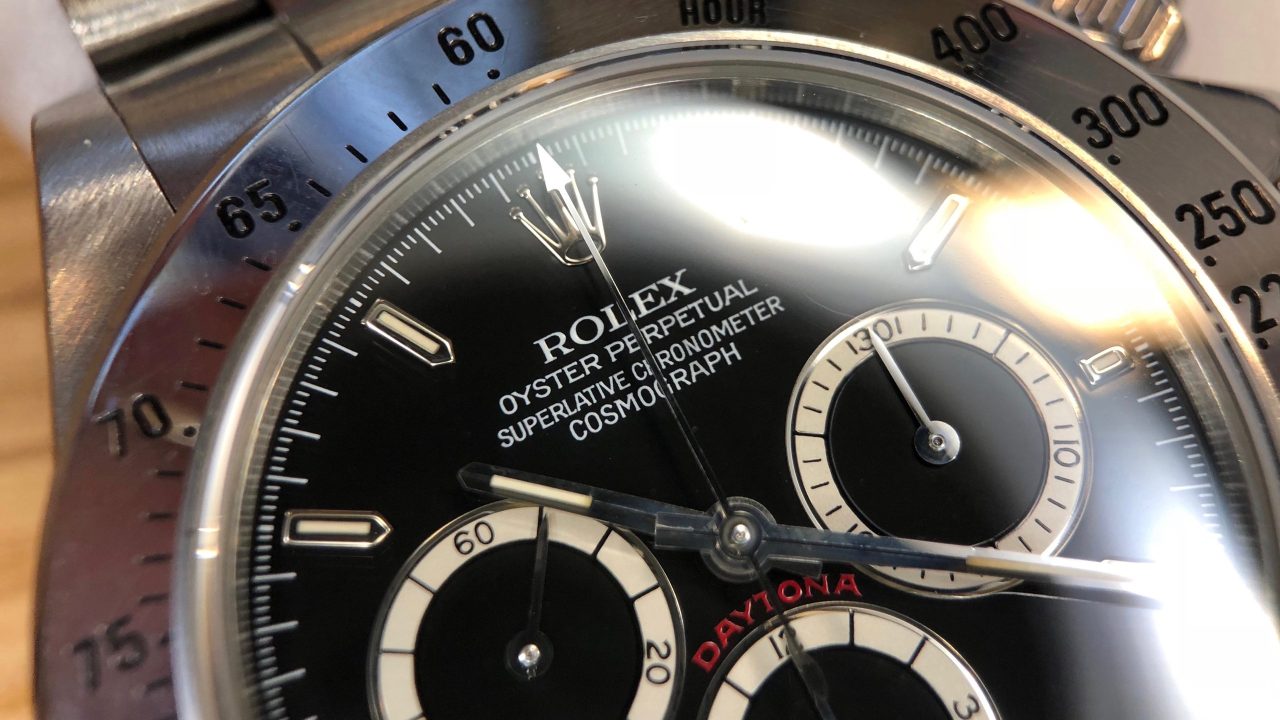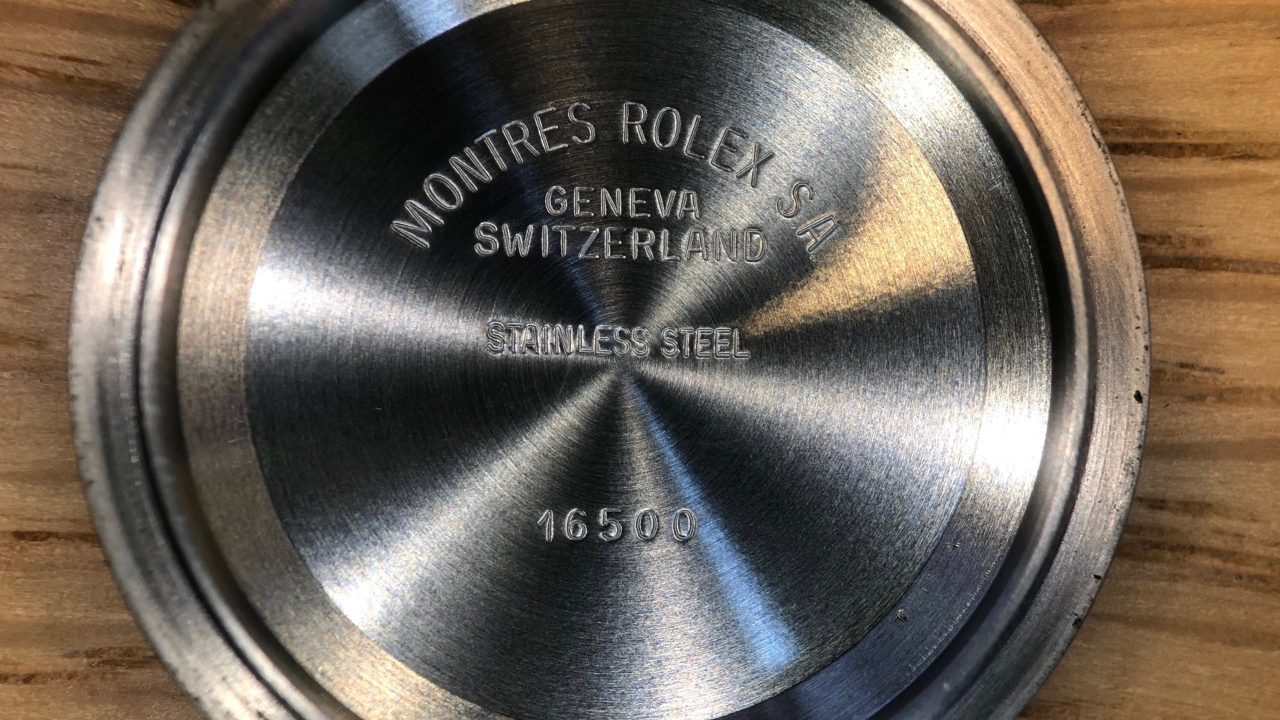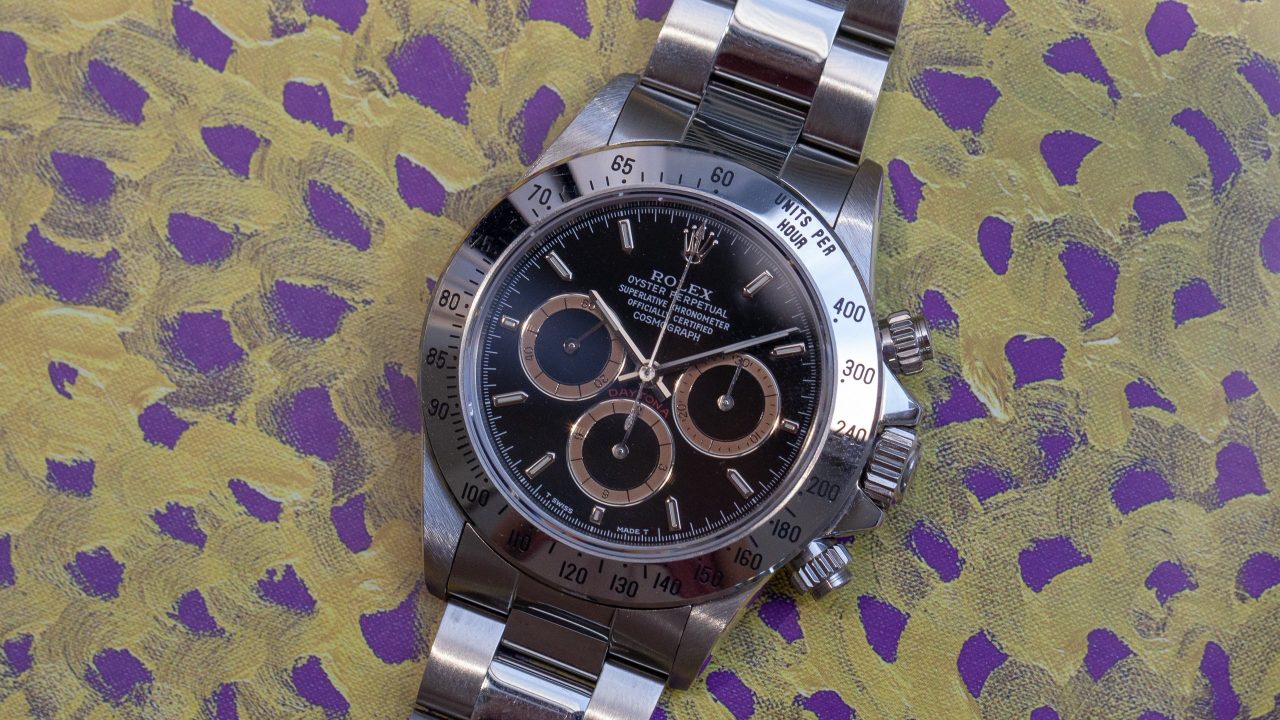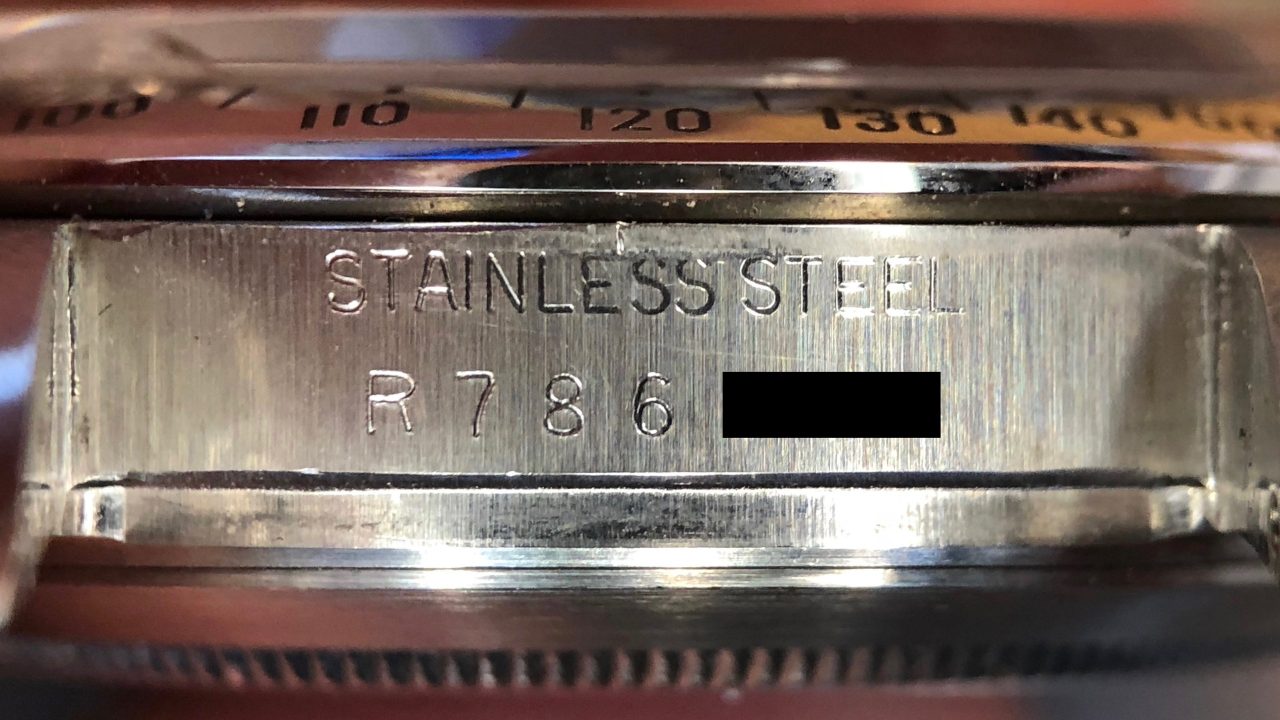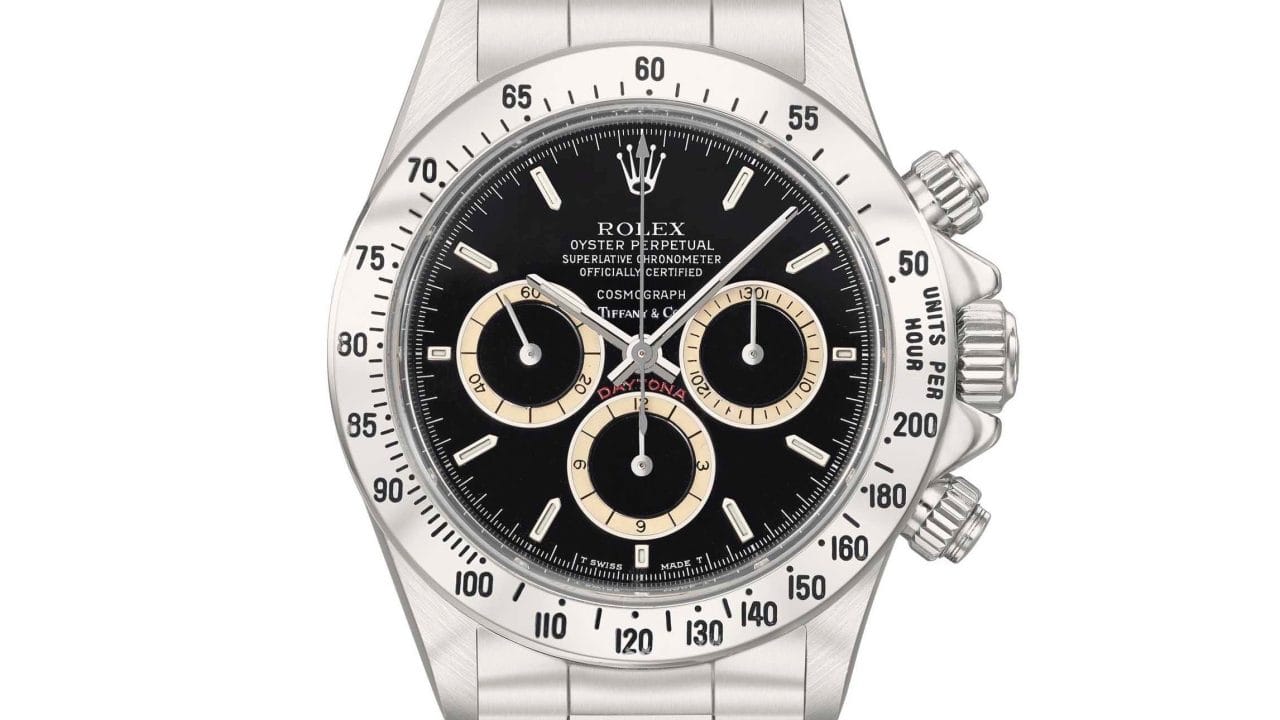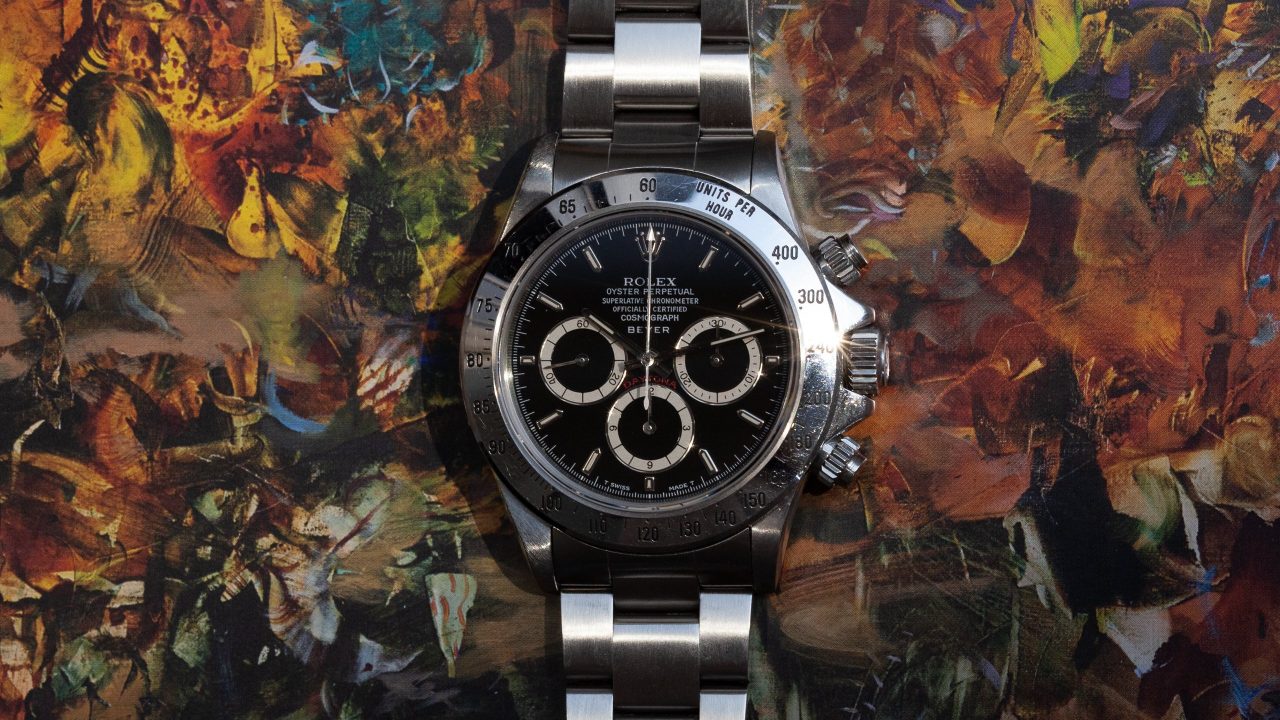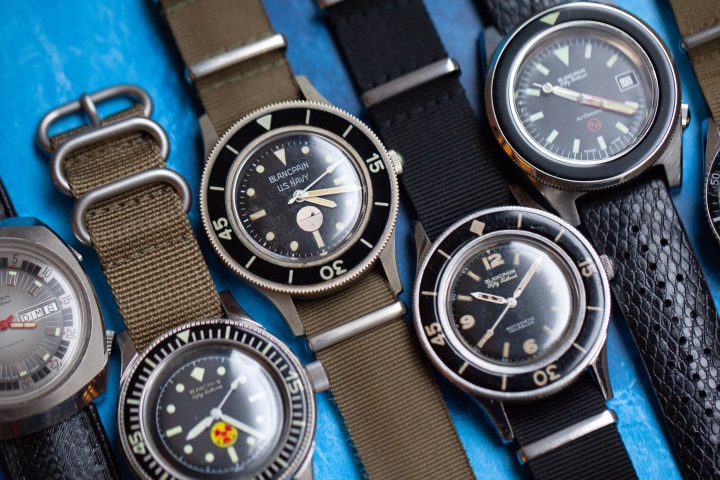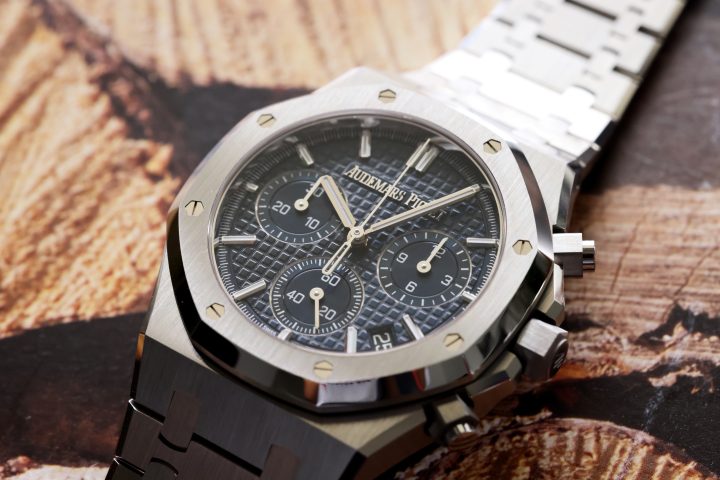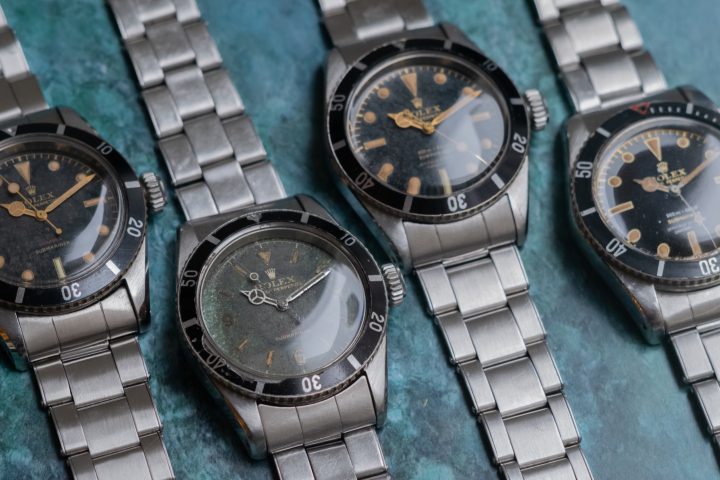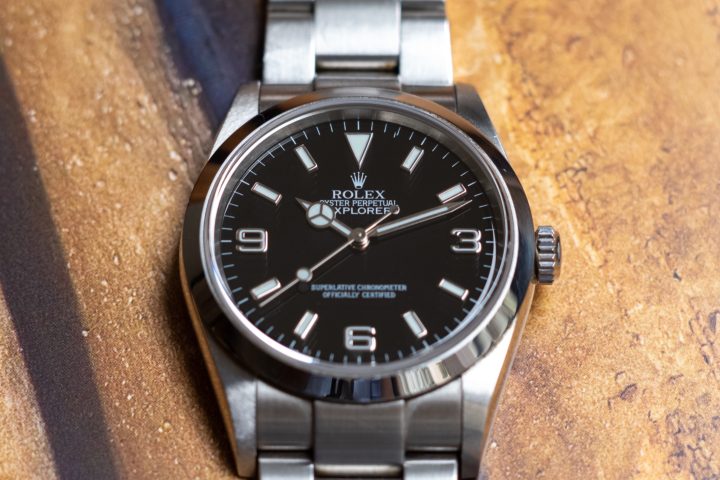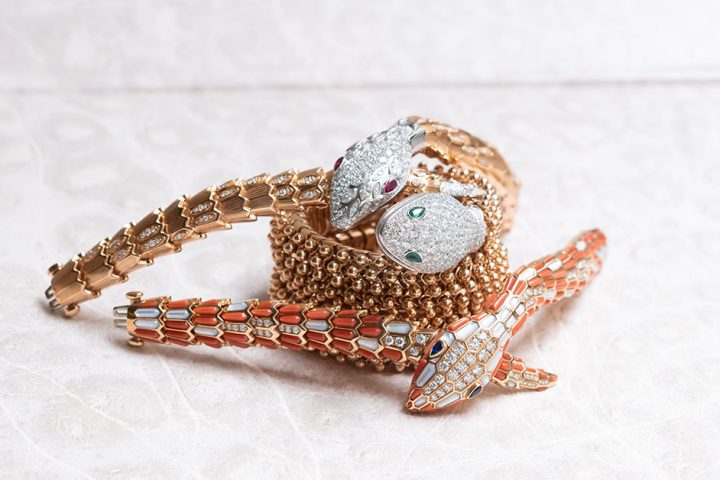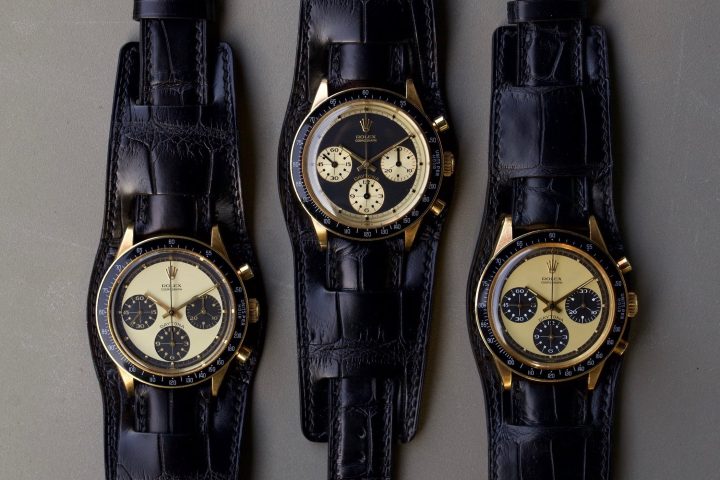For post-vintage Rolex models, the reference 16520 is among the pieces that comes to market most regularly, thanks to the sheer that were produced and the relatively high value due to the chronograph complication. It is also the piece that is often introduced to new watch enthusiasts, who either want to have a nice day-to-day watch, or are starting to build a collection around Rolex sports watches. The reasons for the choice are simple: first, it is THE Rolex Daytona, a model which every enthusiast should own at some point due to its iconic status. Second, the 16520 acts as a bridge for the Daytona shifting from vintage to modern, being the first automatic movement of the Rolex chronograph family, making it a true game changer. The price was also – until 2015 – at a good range to start with. Allow me to share with you the evolution the reference 16520, with research on the pricing trend and potential effects, and the variations within the reference.
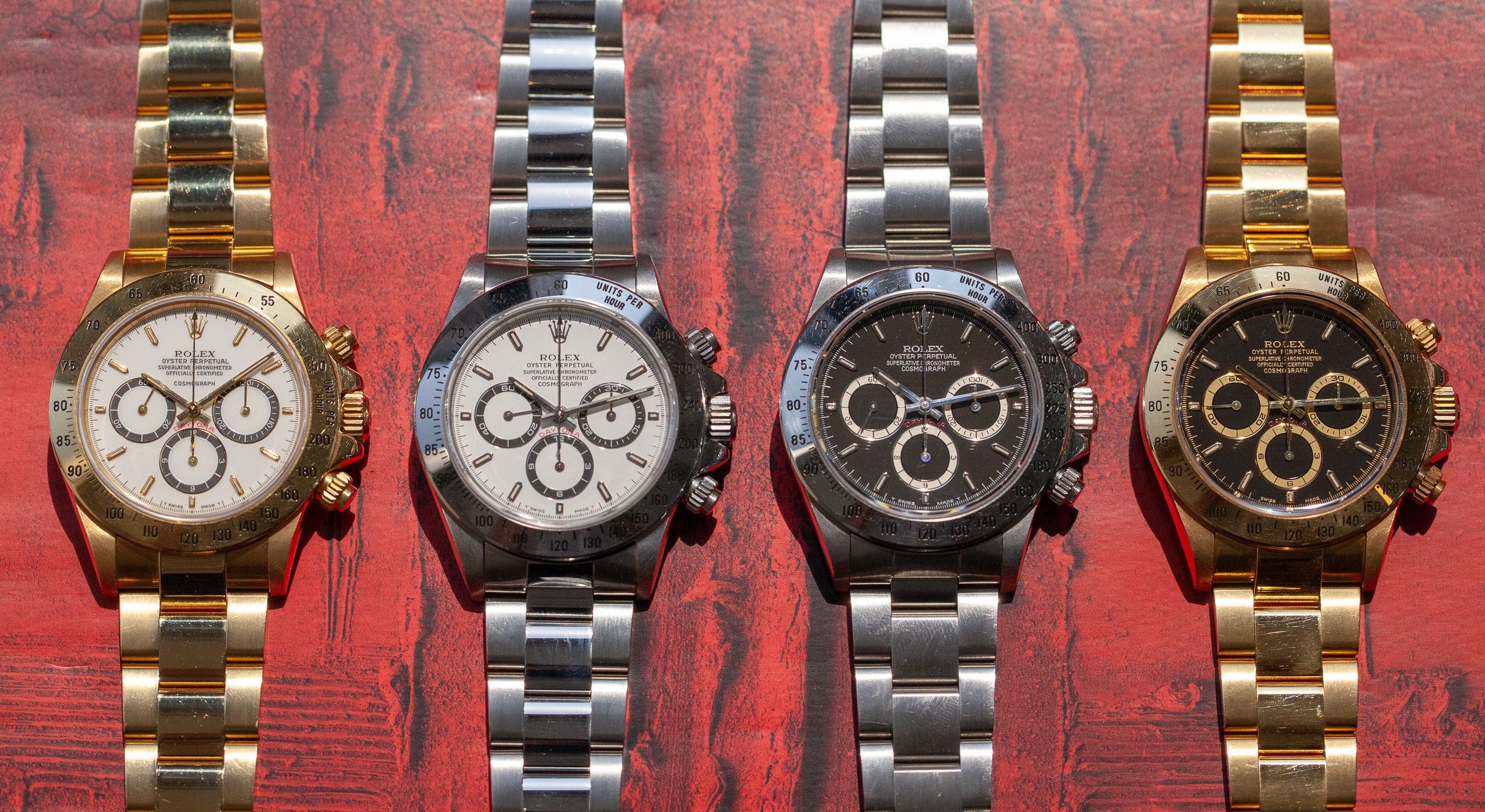
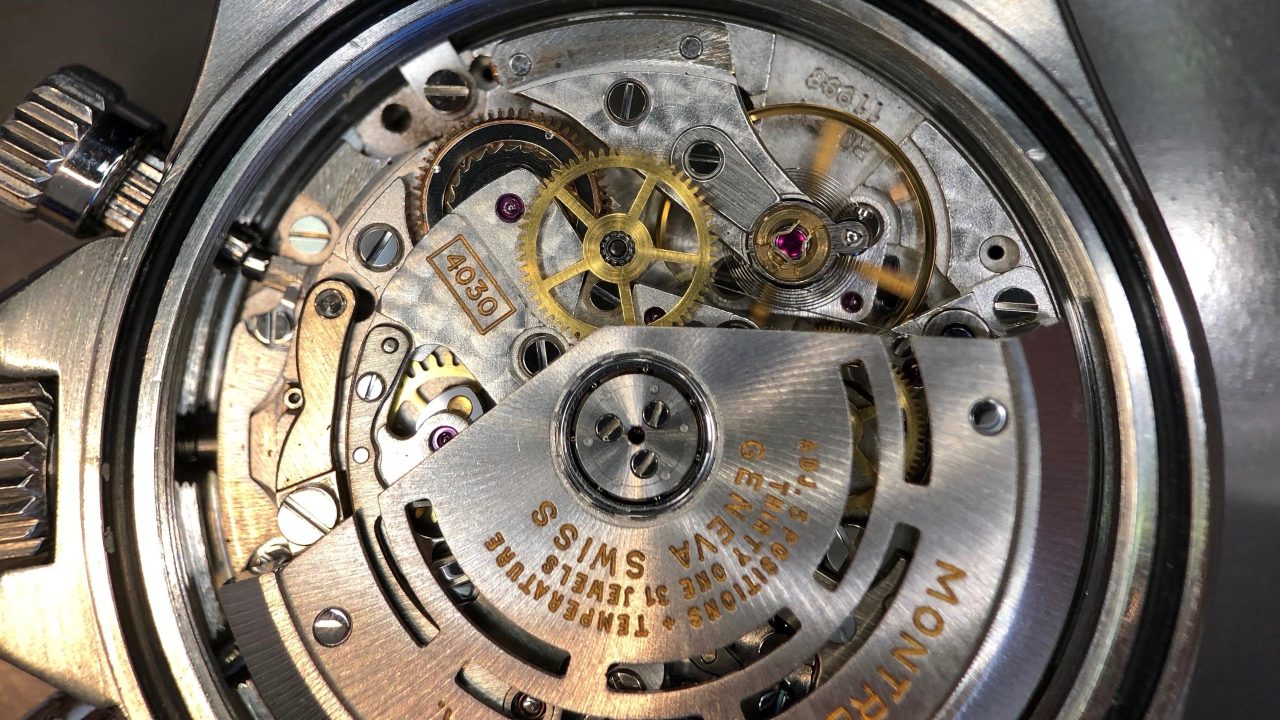
The beating heart of the 16520, calibre 4030 based on the Zenith El Primero movement but heavily modified by Rolex
What is the reference 16520?
In 1988, to celebrate the Daytona’s 25th anniversary, Rolex launched reference 16520 in stainless steel, which will be the focus of this article, together with reference 16523 in two-tone steel and gold, plus reference 16528 for yellow gold. Increasing the case size from 37.5 mm to 39.0 mm, the brand new Daytona collection acted as the link to the modern era, for the first time materially transformed to something different from its predecessor. Having the first automatic “perpetual” movement (a term Rolex likes to attach to automatic winding) in the Daytona family, the 16520’s calibre 4030 is based on Zenith’s El Primero 400 movement. Requiring no less than four years of research and development, Rolex made a significant adaptation by replacing more than half the parts, to improve this “engine’s” performance.
Talking about the movement, calibre 4030 is, absolutely a milestone in automatic movement history. The story begins with how the legendary El Primero became, arguably, the first integrated automatic chronograph movement in 1969. With the challenge of quartz movements, it was not until 1986 that production of the El Primero was re-started. As Rolex always does with their outsourced ébauches, calibre 4030 was largely modified to the performance requirements of Rolex. First, to minimise the component wear, the oscillation rate was reduced to 28,800 vph from 36,000 vph. Second, the date function was removed from the original base. Third, the escapement system was modified with a sprung Glucydur balance wheel and balance spring with Breguet overcoil, replacing the original flat hairspring.
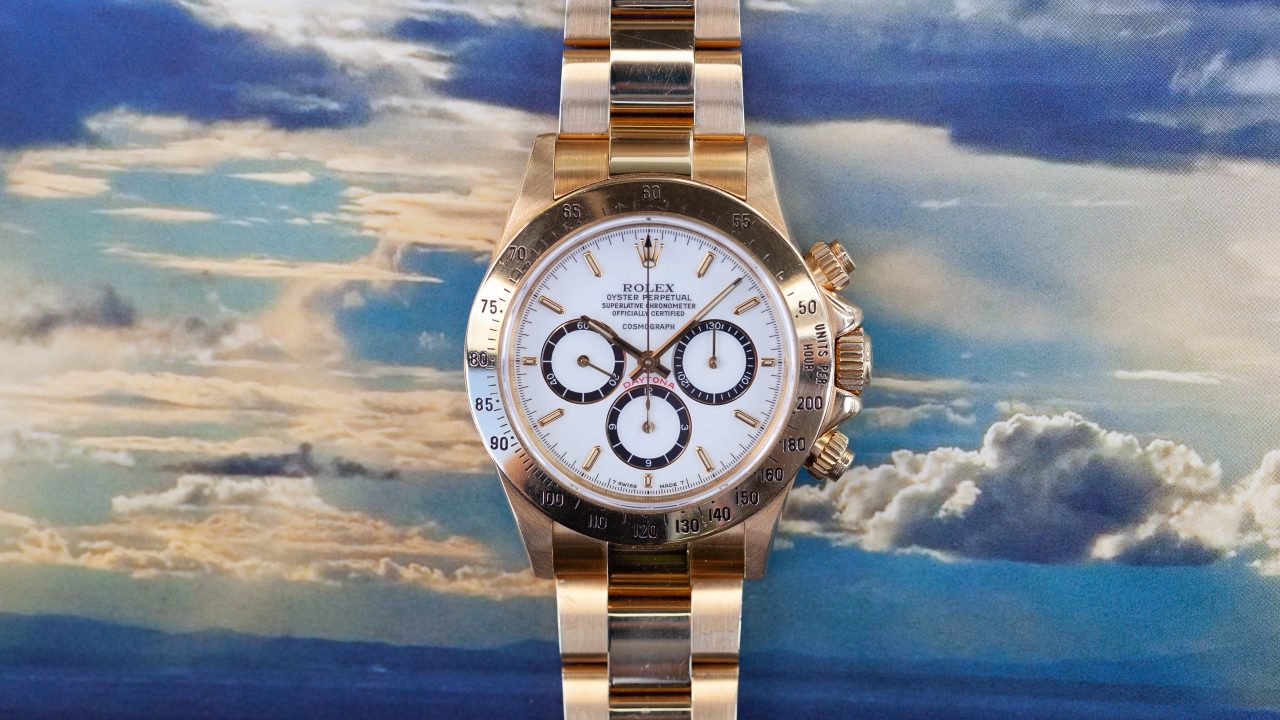
Although not the focus of the article, the reference 16528 in gold with “floating porcelain” dial is particularly alluring
Model variations
Discontinued in 2000 (with the P series), during the twelve production years, there were in total five variations for dials and three type of bezels that appeared in the market.
Bearing R-series case number, the “Mark 1” was the first batch that launched in 1988. Having the transitional bezel from the vintage models, the scale was for 200 units, and the “unit per hour” text is at 3 o’clock.
The most remarkable feature for the R and early L series reference 16520 was the “floating”dial, where the “Cosmograph” was detached from the bulk of the text “Rolex / Oyster Perpetual / Superlative Chronometer / Officially Certified”. For the white dial version, there is also the highly desirable “porcelain dial”, actually made of lacquer, with the text baked on layered coatings, giving it a certain thickness relative to the dial if you look from the side. To avoid any confusion, the reason why the white lacquer dial named as “porcelain” is because it shares the features of enamel and porcelain, in that it is hard with polished finishing, while having a much lower production cost (firing is not required) but retaining a perfectly even surface.
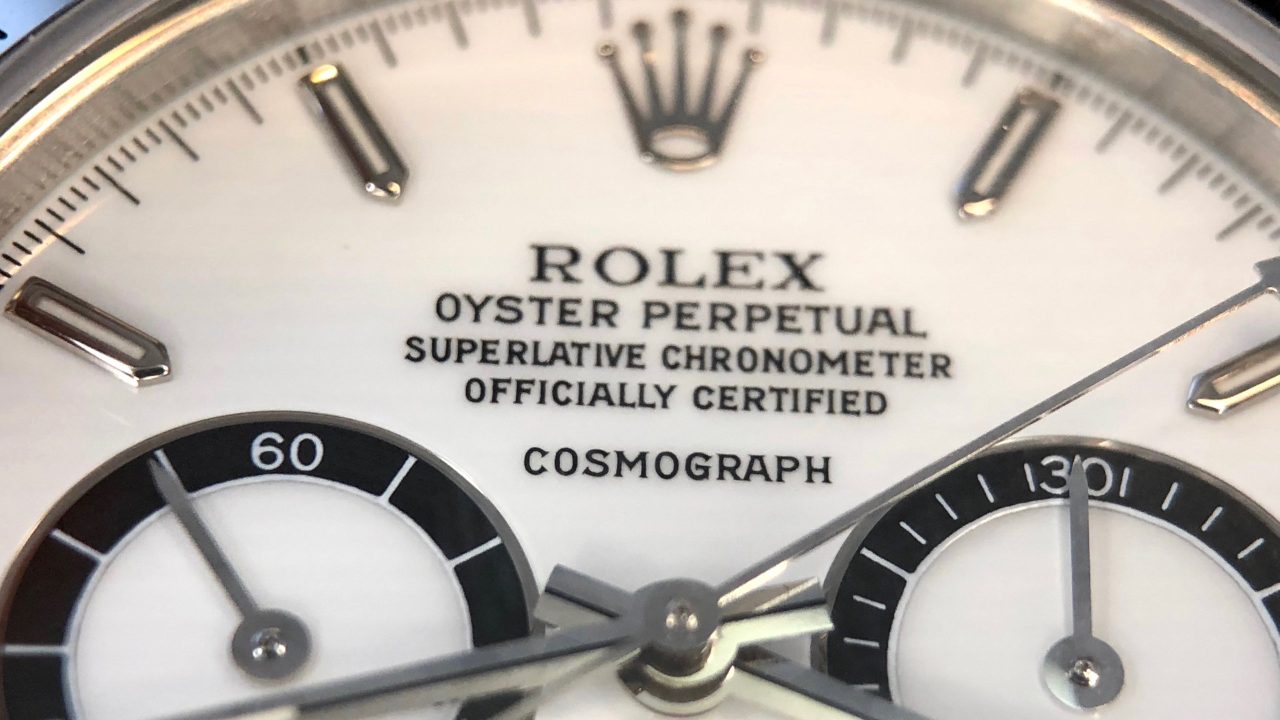
The details of the “floating porcelain” dial in a 16520 with R series case number. Notice the offset shadow caused by the layers of lacquer in the dial.
Early on in the reference’s production, from 1989 to 1990, there was a very short run for the L-series, where the bezel was modified to the “Mark 2” version with a scale for 400 units, with 250 and 225 indications. The “units per hour” has been relocated to 1 o’clock. The dial is even more rarely seen than the “floating” variation, with four lines of text without the “Officially Certified” designation. This configuration is probably the shortest and rarest edition for the reference.
For the “Mark 1” and “Mark 2” series, the dial was from Singer, the well-known third-party company producing dials for Rolex that would occasionally be directly involved in the dial concept and design process. Singer, known as an artist for dials, would have come up with a design that is very different from the later standard and relatively conservative production from the Rolex factory. These would be the last two editions of dials that Singer produced for the Daytona series.
From 1990, the “Mark 3” bezel was used until the reference was ultimately discontinued. The bezel ring continued to have markings for 400 units but the indication was changed to 240 instead of showing 250 and 225. In the following decade, we would have three more dial variations. From 1990 to early 1993 (E series to S series), we have the period with the so-called “inverted 6” dial, with the 12-hour chronograph subsidiary dial showing the numeral ‘6’ without a radial flip, such that it would read as a ‘9’ when seen on the wrist. From 1993 to 1998, the numeral ‘6’ is no longer inverted with a font changed to a bolder and more modern version, which we can regard as the “Mark 4” version.
With this iteration, the black dial variant would occasionally see the silver outer ring of the subsidiary dials turn varying degrees of brown. With these S, N, T and W serials, the black dial’s market value can be double that of the equivalent white version, due to the charismatic uniqueness of the colour change, referred to as “tropical” or “Patrizzi” (after the eminent auctioneer who reputedly discovered the characteristic) by collectors. The colour change was, of course, unintentional; reputedly Rolex had used an organic varnish called Zapon to protect the outer ring on the subsidiary dials, but it would turn out to react to ultraviolet rays and oxygen, with the silver becoming oxidised, turning to shades of brown.
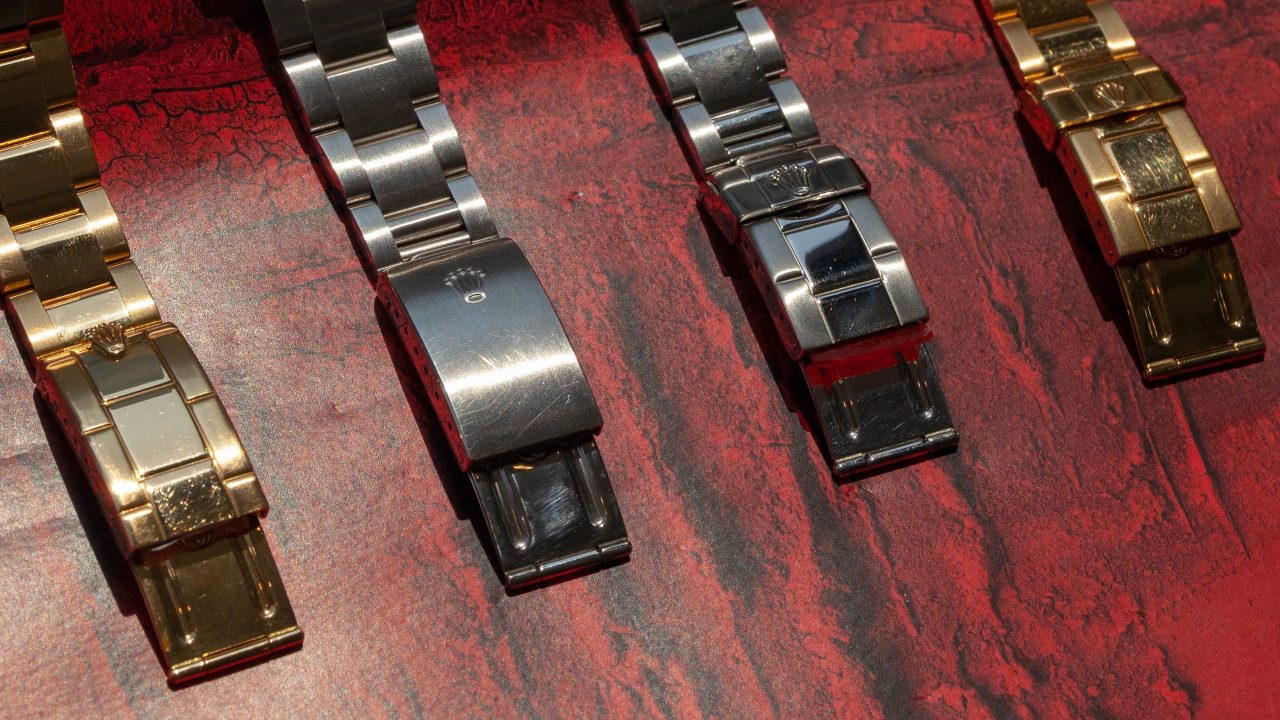
A good example of the variety of clasps and bracelets that came fitted to the reference 16520 and 16528.
The last dial configuration would go to the U, A and P series, which were produced from 1998 to 2000. This change was dictated by the substitution of the radioactive material tritium for the luminous material on the hour markers with Luminova, which has a glow that lasts significantly longer and does not degrade over time. This is indicated on the dial by a “Swiss Made” marking instead of “T Swiss Made T”.
For the bracelet, there are two versions to look for: reference 78360, made from 1988 to 1991 approximately, with all brushed finishing, and reference 78390, from 1991 to 1998, with a polished centre links. For the last version, from 1998 to 2000, the bracelet bore reference 78390A with solid end links, often abbreviated to “SEL” by collectors. It’s also worth noting that until 1999, the inner case back was stamped 16500, but for the final year of production it was stamped 2100, which would continue on into reference 116520 production.
Auction prices records
I still remember when I just joined the auction business, modern Rolex watches were always the sweet spot, with promising sell-through rates and stable results, which still applies today. When I say stable results, it’s because there is always a market reference and constant demand, so it’s generally easy to set the seller’s expectations, and to show steady growth for the buyer. The reference 16520 Daytona is, once again, a good example.
When it was launched in 1988, the supply could only minimally cover the demand, and the waiting list stretched to a few years. From time to time, pieces appeared in the auction market, and I’ve combed through the records for the past six years, which may provide some ideas for the pricing trend.
It is obvious that for dial variations with larger production, the more they come to market. Throughout the years, Mark 4 dial with T Swiss T markings and a normal ‘6’ have been the most frequent to appear at auction, around eight pieces per year. With this supply, there is still an upward trend in prices, especially the black dial version with tropical rings. Up to 2013, the price for black dial 16520s with tropical subsidiary dials was around HKD 100,000 all in (approximately 13,000 CHF). In the past five years, the trend has gone upwards; in early 2015, I was phone bidding with a client on a medium tropical 16520 black dial, and the lot was won at HKD 130,000 hammer (the final price was HKD162,500, approximately CHF21,000, including premium), which at the time, I thought was already very expensive. Time would prove me wrong.
The tropical effect has a significant impact at auction; the price for watches where the subsidiary dial has turned a light cream is, on average, around HKD 200,000 (circa 26,000 CHF). For a deeper tropical coloring with even distribution over the ring, the current record price was set at Phillips in November 2018, for a S serial case piece, which sold for CHF 80,000 (approximately HKD 620,000) all in.
Sharing similar popularity as the Mark 4, the Mark 3 dial with inverted 6 has not yet appeared at auction in 2018, but its prices tend to show more fluctuation as there were more variants for that dial type.
In general, the black and white “floating” dial is the most collectible for the reference. Most of these have been auctioned for more than HKD 400,000 (approx. CHF50,000). The current record was set at the Phillips Daytona Ultimatum auction in May 2018 achieving 187,500 CHF (approximately 1.45M HKD) for an extremely well preserved example with “porcelain” dial and R7 case number.
The rarest of them all is the Mark 2 four liner dial. Three have come to the market, with the best performing example was at Christie’s Geneva 2013, the Rolex Daytona “Lesson One” sale, which sold for CHF 56,250 (approx. HKD 450,000). The other two example were sold in 2014 at Sotheby’s, however the sold price is not as high as we’d expect, given the rarity of the version. Time will tell how the rarity of this version will effect prices in the long term.
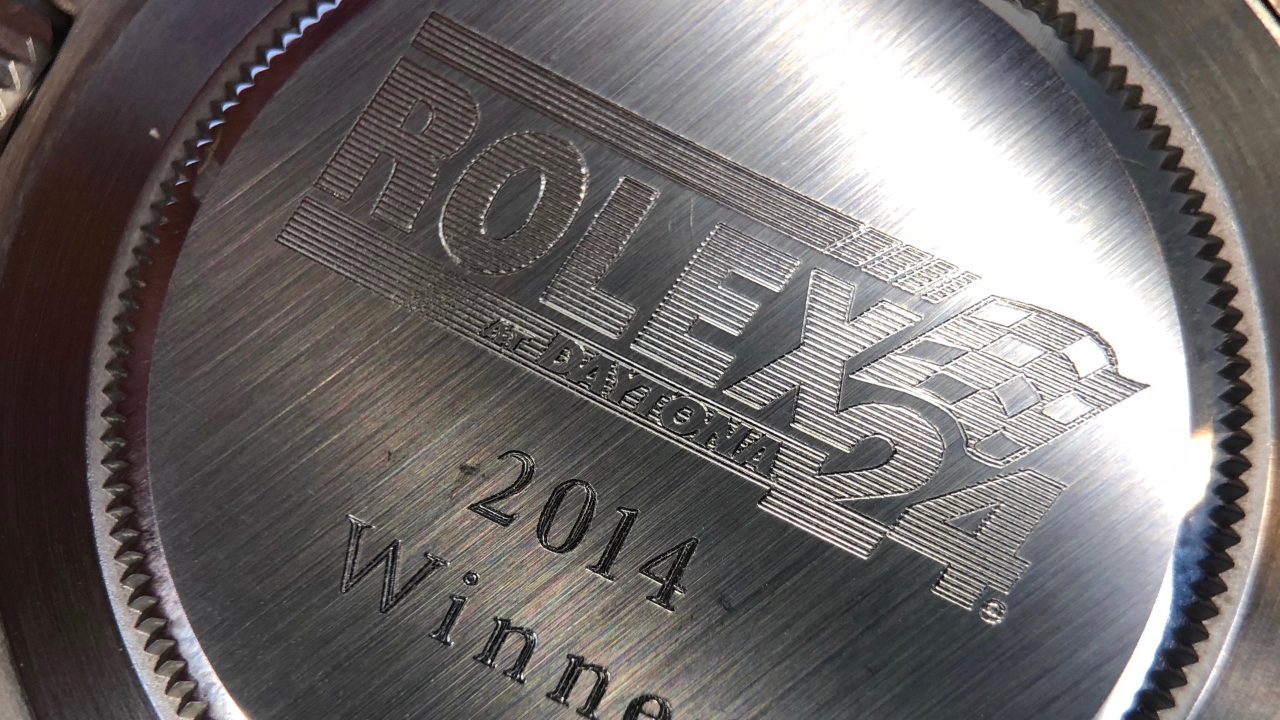
A case back from the later series reference 116520 “Winner” watches, but the engraving is similar throughout.
The Winner 16520
There are many great stories connecting renowned racers with the Rolex Daytona watch as the brand has been one of the major sponsoring partners in the motorsports world. While Paul Newman may be the name that come to one’s mind immediately, Rolex has actually been associated with many well-known racing events, including Formula 1, the 24 Hours of Le Mans, the Goodwood Revival, and the Rolex 24 at Daytona. It’s the latter which interests us most; since 1991, when Rolex became the official title sponsor of the 24-hour race at Daytona, winning team members would be presented with a stainless steel Daytona wristwatch with a case back engraved with “Rolex 24 at Daytona Winner” and the relevant year, which is known as the “Winner” watch. Very few examples have come to market over the years; in spite of this rarity, the value of the “winner” Daytona is highly variable, as it’s related to the driver it first belonged to, and under what circumstances has the watch come to be sold. Personally, I would love to see one of the winner watches from Scott Pruett, the legendary racer who started his career at 8 years old, and would go on to win the 24 Hours at Daytona no less than five times.
Retailer Dial
Although extremely rare today, there was a time when prestigious retailers would be allowed to have their name on the dial of the watch they sold; it represented the brand’s respect and relationship with the retailer over the years. Whenever these kinds of dials appear to the market, the reaction is always positive, leading to well-performed results; however, this has resulted in there being more retailer dial floating around in the market than there should be. Starting from 2016, for reference 16520, there are a few examples that have appeared on the market, and they achieved almost double the price compared with a “regular” dial.
On Mark 1 floating dials, the examples are all in black, printed with “Tiffany & Co.”. Two have so far been sold by Christie’s. One example, an R series, showed up at Christie’s, in the May 2016 Geneva and the June 2017 New York sales, both times selling for a higher than average (for the time) USD 95,000 (approximately HKD 741,000). Another known example in L series achieved CHF 60,000 (approximately HKD 480,000) in the November 2016 Geneva auction. It’s worth noting that with a wide gap between the production of these two known examples, the printing of “Tiffany & Co.” shows a slightly different font.
Apart from the Mark 1 floating dial, another version with prestigious “Tiffany & Co.” signature 16520 dial is on a Mark 3 inverted 6 dial. At the moment, there have been only three known examples on the market. There are two with “Tiffany & Co.” right under “Cosmograph”, on a black and a white dial, sold for CHF 77,500 (approximately HKD 620,000) at Christie’s in May 2017, with Tiffany & Co packaging and warranty, and another selling for HKD 250,000 (approximately 32,000 CHF) in May 2016 at Phillips with Tiffany & Co packaging as well. Another interesting example was at Sotheby’s New York in June 2016, where a Mark 3 dial reference 16520 L series with “Tiffany & Co.” signature inside the subsidiary dial at 6 o’clock was sold for USD 56,250 (approximately HKD 438,750).
Beside “Tiffany & Co.” signature, “Beyer”, the first retailer specialising in watches, jewelry and clocks in Switzerland, is also coming to the market at Phillips Hong Kong November 2018 auction. With a low estimate at HKD 468,000 (approx. CHF 60,000), the result will be a good chance to prove the value of these retailer signed dials.
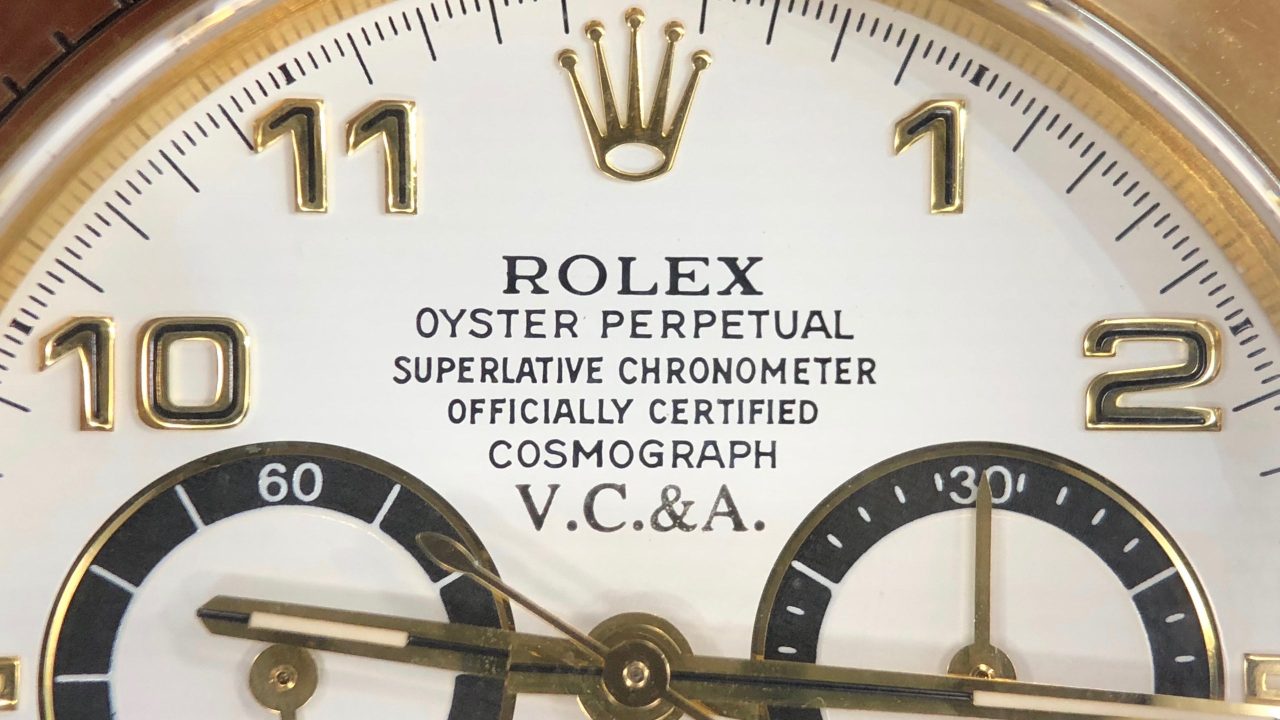
The initials of Van Cleef & Arpels stamped to the dial of the reference 16518 sold at the Phillips Daytona Ultimatum auction.
While we enjoy the search for something extra special, it’s important to note that there is no official reference regarding which circumstances would lead to Rolex authorising a retailer signature to be added to the dials, or even how the signature would be printed. With too few examples to study and derive a consistent pattern, it is very difficult for collectors to say if a specific example is 100% authentic. Given the famous example of reference 16518 “Le Roi Soleil” auctioned in Daytona Ultimatum, Phillips, achieving result for CHF 187,500 (approx. HKD 1,460,000), the evidence proved that Rolex authorised V.C.A to stamp the dial, but it was not done in Bienne. As a result, despite the great results achieved by these double name dials, they invariably lead to much discussion and debate whenever one come up to market.
Other Rarities
The indexes on reference 16520 are always in baton form, but on very rare occasions, the indexes are presented in Arabic numerals, so far all on white dials. This special dial first appeared at auction in a 2008 Christie’s auction, which achieved an impressive result, at that time, of HKD 223,500 (approx. CHF28,000). It was distinctive from those that would appear later, as the subsidiary dial chapter rings of this example are silver instead of black. The other two examples to appear at auction at were at Sotheby’s Geneva in November 2012, and Phillips’ Hong Kong auction in May, both with Mark 3 dials with inverted 6.
There is only one example appears in auction with the “Daytona” missing on the dial. It may be due to a manufacturing defect, for which we are likely to never get a solid answer. With the warranty and a thorough check by a watch specialist, it did well by achieving CHF 31,250 (approximately HKD 243,750). It’s time to check your own 16520 to see if there is any missing element, there may be more in the market!
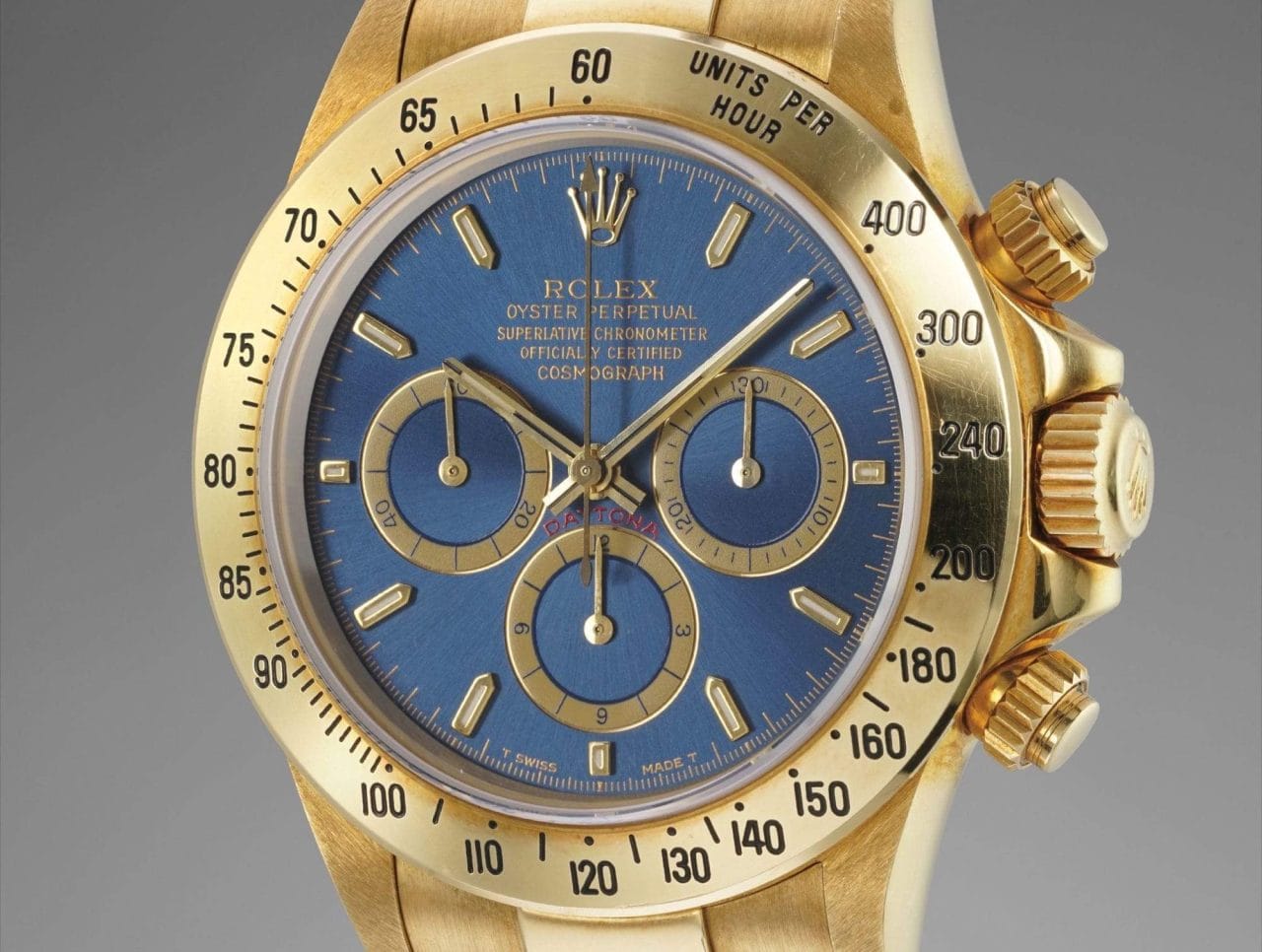
The appealing shade of blue used for the “Chairman” dial, one of the rarest configurations (image courtesy of Phillips).
Prestigious Family member
Although the focus of this article is on reference 16520, the stainless-steel version of the model, there are two special references that I just could not resist mentioning: the “Chairman” and the “Platinum”. Both of the examples have never been commercialised, with very limited production numbers.
The “Chairman” dial is believed to have been manufactured in the Singer laboratories in a small sample batch. Bearing a galvanic sunburst blue finish with inverted 6 to the subsidiary dial, these dials were provided as gifts to close friends and business partners of Rolex. Examples have come up at auction twice, first in Christies 2013 “Lesson One” selling for CHF257,000 (approximately HKD 2,000,000), then at the Phillips November 2017 Geneva auction, selling for CHF552,500 (approx. HKD 4,300,000), more than double the previous result.
The “Platinum” first became official known to the market in 2018. Legend has it that Patrick Heiniger, the former CEO of Rolex, worn platinum Daytona with cal.4030. Offered by Sotheby’s in their October Hong Kong sale, the elusive piece was fresh to market from the family behind the Rolex retailer in Milan called Gobbi, and set a new record for an automatic Daytona, selling for HKD 6,840,000 (approx. CHF 876,000).
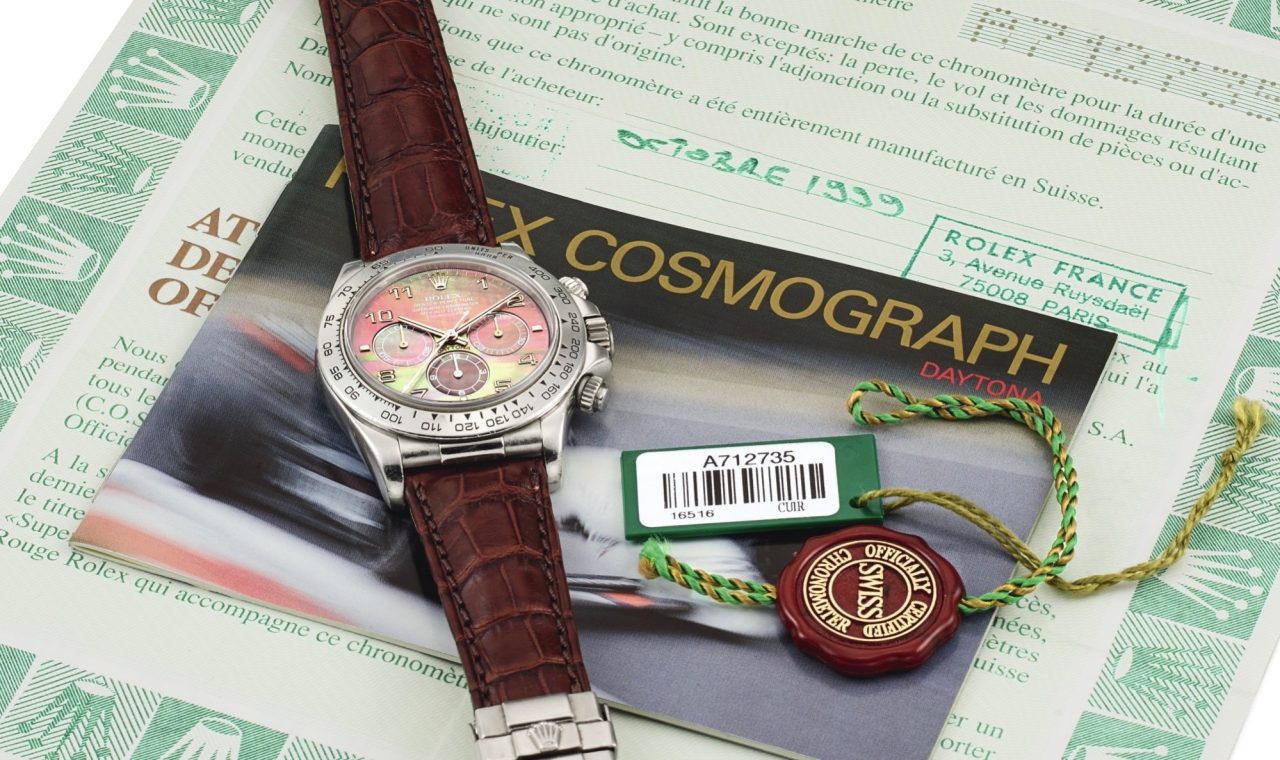
Simply known as the “Platinum”, this is the watch that currently holds the record for the most expensive “Zenith” Daytona (image courtesy of Sotheby’s).
For watch enthusiasts, the Rolex Daytona is certainly regarded as a must in any collection. The reference 16520 stands a bridge symbolising Rolex’s evolution from “vintage”, when parts were outsourced, to the modern era. Relative to today’s fervent vintage Rolex market, the reference 16520 actually enjoys a steady growth on pricing, although if compared with modern Daytonas, such as the reference 116520, or even the reference 116500, its price may be on the high side. However, the amazing part for this particular reference is that you can still enjoy the hunting for one in a well-preserved condition with special distinctive elements on the dial and bezel.
